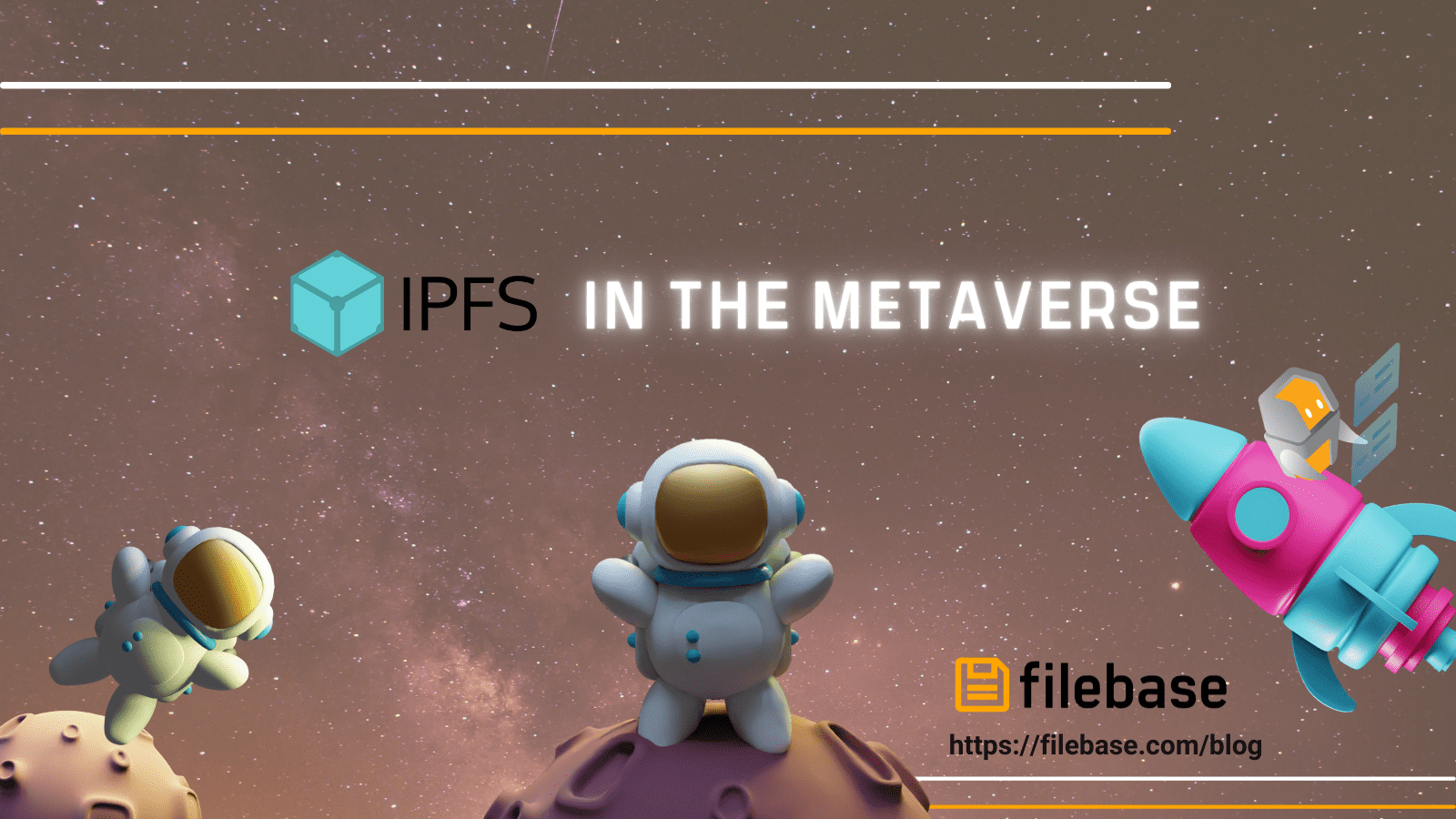IPFS in the Metaverse
Explore how IPFS enhances metaverse platforms with decentralized, content-addressed storage, ensuring data permanence and resilience.

The term ‘metaverse’ can refer to any digital or virtual reality platform that combines any combination of aspects from online gaming, social media, virtual reality, augmented reality, cryptocurrencies, or NFTs for users to interact with one another. Metaverse worlds aren’t necessarily a uniquely Web3 aspect, though Web3 technologies are being used to develop existing Metaverse platforms further or develop entirely Web3-based metaverse worlds.
For example, the online gaming platform Roblox is considered to be a metaverse world, though it doesn’t use cryptocurrency, NFTs, or blockchain technology on the platform. In contrast, the virtual world Decentraland is an entirely Web3-based platform that utilizes NFTs, cryptocurrencies, decentralized storage, and blockchain networks on the backend.
Web3’s Metaverse Foothold
For Web3 communities, using metaverse platforms is often one of the most beneficial ways for community members to interact with each other in a manner that can resemble meeting in real life at a restaurant, event expo, or industry conference.
In addition to this, Web3-native metaverse worlds benefit from the unique use cases of token-gating through the use of NFTs, allowing for the capability of private virtual worlds or exclusive virtual items in these worlds. Creating a token-gated virtual community has become an attractive benefit of many NFT collections and communities, such as Otherside, the virtual metaverse world created by Yuga Labs for the Bored Ape Yacht Club community.
The combination of these two attributes has given metaverse worlds a strong foothold in the Web3 space, despite not being a Web3-native concept.
Metaverses and IPFS
Each metaverse platform stores hundreds, even thousands, of terabytes of data. Everything from virtual graphics, world maps, in-game items such as buildings, real estate, vehicles, or other items, and each player’s character and their personal items must be stored somewhere. Typically, since many metaverse worlds use traditional Web2 infrastructure stacks, they use centralized storage like AWS or Google Cloud. Any outages of these storage providers result in the metaverse world being down and inaccessible for their users.
Web3-native metaverse platforms use decentralized storage options like Arweave or IPFS for storing assets used in the virtual reality world. IPFS is a decentralized peer-to-peer storage protocol that is used to facilitate the IPFS network. IPFS differs from decentralized storage networks in the aspect that other decentralized storage networks like Sia or Arweave are blockchain networks that rent node storage out in return for cryptocurrency. Additionally, data stored on decentralized storage networks are typically private, unlike IPFS, where all data is publicly accessible through the content’s IPFS content identifier (CID) value.
How Metaverses Benefit from IPFS
Publicly Accessible
Since all content is publicly accessible through the file’s content identifier and an IPFS gateway URL, it’s easily integrated into metaverse platforms. There are no permissions to configure or manage and no complex pieces of code to download and then view the file.
Content Addressing
IPFS uses content addressing, where all content is accessed through a content identifier rather than a location address like HTTP uses. HTTP is susceptible to link rot, which is when a URL changes and makes content inaccessible since the URL is no longer valid. IPFS is not susceptible to link rot, since the CID of a file will never change and can always be accessed through the IPFS native URL or an IPFS gateway URL.
Support For All Content
IPFS supports uploading and hosting content of all forms, shapes, and sizes. Unlike some decentralized storage networks, there are no limitations for minimum or maximum file size, minimum or maximum data retention, or unsupported file types. IPFS can be used to store data in folders or as individual files, enabling a wide range of different workflows.
Filebase: Geo-redundant IPFS Pinning
When a file or folder is uploaded to IPFS, it must be pinned for it to persist on the network long term. Most pinning services use IPFS nodes on centralized providers like AWS or Azure, and only pin one copy of each file on one IPFS node in one geographic location.
By default, all files and folders uploaded to an IPFS bucket on Filebase are pinned with 3 copies stored across 3 unique, geographic locations in the United States, London, and Frankfurt. This way, 2 out of the 3 IPFS nodes can be inaccessible or down due to an outage, maintenance, or other reason, and the file will still be accessible. The Filebase geo-redundant IPFS pinning solution provides a reliable infrastructure for IPFS data to be stored.
Reliability and redundancy are especially important for metaverse worlds, which rely on consistent infrastructure uptime for the players in the virtual world.
You can sign up for a free Filebase account to get started with your IPFS journey today.
If you have any questions, please join our Discord server, or send us an email at hello@filebase.com.
